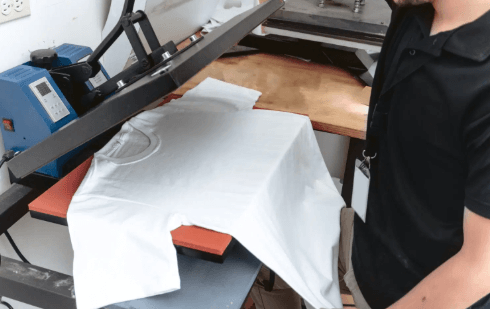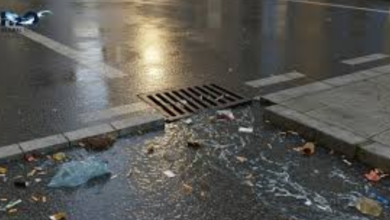Can Heat Transfers Be Combined With Other Decoration Methods?

Apparel decorators and brand owners are constantly exploring ways to push creativity further. While heat transfers are already known for their versatility, many wonder whether they can be successfully paired with other decoration techniques such as screen printing, embroidery, sublimation, or specialty finishes. The short answer is yes—when done correctly, heat transfers can complement other methods to create unique, durable, and high-value designs that stand out in the marketplace. If you’re interested in expanding your decoration capabilities or testing out hybrid techniques, you can learn more about professional-grade heat transfers and how they can fit into your production workflow. Understanding how heat transfers interact with other methods ensures you not only produce eye-catching designs but also maximize your investment in each garment.
This article explores the creative possibilities of combining heat transfers with other techniques, reviews the cost and workflow implications, and highlights best practices for achieving professional, long-lasting results.
Why Combine Decoration Methods?
The apparel decoration industry is more competitive than ever, and combining methods is one way to differentiate your work. Here are some key advantages:
- Expanded design possibilities: Different methods bring unique textures, finishes, and visual effects.
- Enhanced perceived value: Combining embroidery with transfers or pairing screen printing with specialty foils makes garments feel premium.
- Flexibility for different markets: A youth sports uniform may call for heat-applied numbers plus a screen-printed logo, while corporate apparel may benefit from embroidered crests with heat-applied detail.
- Efficiency: Heat transfers allow decorators to manage short runs, while other methods can handle bulk production, creating balance across an order.
Heat Transfers + Screen Printing
Pairing heat transfers with screen printing is one of the most common combinations.
Benefits
- Vivid logos with special effects: Screen printing handles bold, spot-color backgrounds, while transfers add high-detail graphics.
- Cost management: Transfers can reduce the number of screens required for multicolor designs, cutting setup costs.
- Versatility: Ideal for promotional apparel where a screen-printed message is combined with heat-applied personalization.
Example
Imagine a local event t-shirt with a large screen-printed background design. Adding a heat-applied sponsor logo or attendee name makes the piece more personalized without restarting the entire print run.
Heat Transfers + Embroidery
Embroidery has long been the standard for premium branding, but it can be limited in detail. Heat transfers are often used to enhance or complement embroidered work.
Benefits
- Detail and flexibility: Transfers allow decorators to add intricate details that embroidery can’t replicate, such as gradients or photo-real images.
- Layered texture: The raised thread of embroidery contrasts beautifully with the smooth finish of a transfer, creating a multi-dimensional look.
- Application across tricky surfaces: Embroidery may not be ideal on lightweight fabrics, but transfers can add logos or details without adding bulk.
Example
A polo shirt may feature an embroidered company logo on the chest paired with a heat-applied tagline on the sleeve. This blend keeps the premium look while managing costs.
Heat Transfers + Sublimation
Sublimation is popular for all-over designs on polyester, but it has limits. Adding transfers can extend its capabilities.
Benefits
- Color accuracy on dark garments: Sublimation only works well on white or light-colored fabrics. Heat transfers allow decorators to add bold, full-color elements to darker apparel.
- Small detail zones: Sublimation provides overall coverage, while transfers can highlight specific parts, such as numbers or logos.
- Greater product variety: A sublimated jersey could use heat-applied names and numbers, creating a complete product line.
Example
Sports teams often use sublimated uniforms for full-color patterns and apply heat transfers for individual player numbers and names. This balances efficiency with customization.
Heat Transfers + Specialty Finishes
Foils, puff inks, and reflective films add dimension and style. When combined with heat transfers, they produce highly distinctive apparel.
Benefits
- Eye-catching contrast: Pairing a metallic foil background with a detailed transfer graphic enhances both elements.
- Added functionality: Reflective transfers combined with other print methods improve safety gear and athletic wear.
- Custom layering: Mixing textures allows decorators to create fashion-forward designs.
Example
A streetwear hoodie could feature puff-ink screen printing for raised lettering with a detailed heat transfer logo in the center, creating a bold, layered look.
Workflow and Cost Considerations
While the creative benefits are appealing, combining methods requires planning to manage costs and production timelines.
- Setup costs: Screen printing involves setup fees, while transfers minimize them. Combining the two may save money for multicolor designs.
- Production flow: Transfers are often applied after embroidery or printing, so scheduling and equipment usage need to be coordinated.
- Garment choice: Not all fabrics handle multiple decoration methods equally. Testing is essential for stretch fabrics or heat-sensitive materials.
- Pricing strategy: Hybrid decoration often commands a higher retail price, so businesses should calculate margins carefully.
Best Practices for Combining Heat Transfers With Other Methods
- Test First: Always run samples to check compatibility, especially with heat-sensitive fabrics.
- Mind the Order of Application: Embroidery generally comes first, followed by transfers, to avoid pressing over raised stitches.
- Use the Right Heat Settings: Transfers applied on top of printed or embroidered areas may require adjusted pressure or temperature.
- Educate Customers: Let clients know hybrid methods may cost more but provide added value in durability and appearance.
Industries and Applications
Certain industries benefit more from hybrid decoration approaches:
- Corporate apparel: Embroidered logos paired with heat-applied slogans create a professional but affordable look.
- Sportswear: Sublimated uniforms with heat-applied personalization keep teams unified while maintaining individuality.
- Fashion and retail: Streetwear brands experiment with mixed textures—like foil plus transfers—for trendsetting designs.
- Promotional products: Low-cost screen printing enhanced with transfers makes giveaways more memorable.
The Long-Term Value of Hybrid Decoration
While hybrid methods may involve slightly higher production costs, the return often justifies the investment. Customers perceive layered, mixed-media garments as premium products, which supports higher pricing and repeat sales. For decorators, combining heat transfers with other methods creates a versatile toolkit that can adapt to client needs across industries.
For businesses focused on profitability, offering hybrid decoration also helps stand out in a crowded marketplace where customers are overwhelmed with standard options.
Conclusion
Heat transfers are no longer just a standalone method—they are a versatile tool that integrates seamlessly with screen printing, embroidery, sublimation, and specialty finishes. By combining them, decorators unlock new creative possibilities, expand their product offerings, and enhance the perceived value of every garment. Whether you’re creating high-end corporate apparel, durable sportswear, or fashion-forward retail items, hybrid methods deliver both aesthetic and financial benefits.
For decorators who want to experiment, starting with small runs and mixing transfers with embroidery or screen printing can be an excellent way to gauge customer response. Over time, hybrid decoration may become a profitable cornerstone of your product lineup. And if you want garments that hold up as well as your designs, consider pairing your hybrid prints with durable outerwear like Carhartt jackets—an excellent canvas for showing off the best of both worlds.




